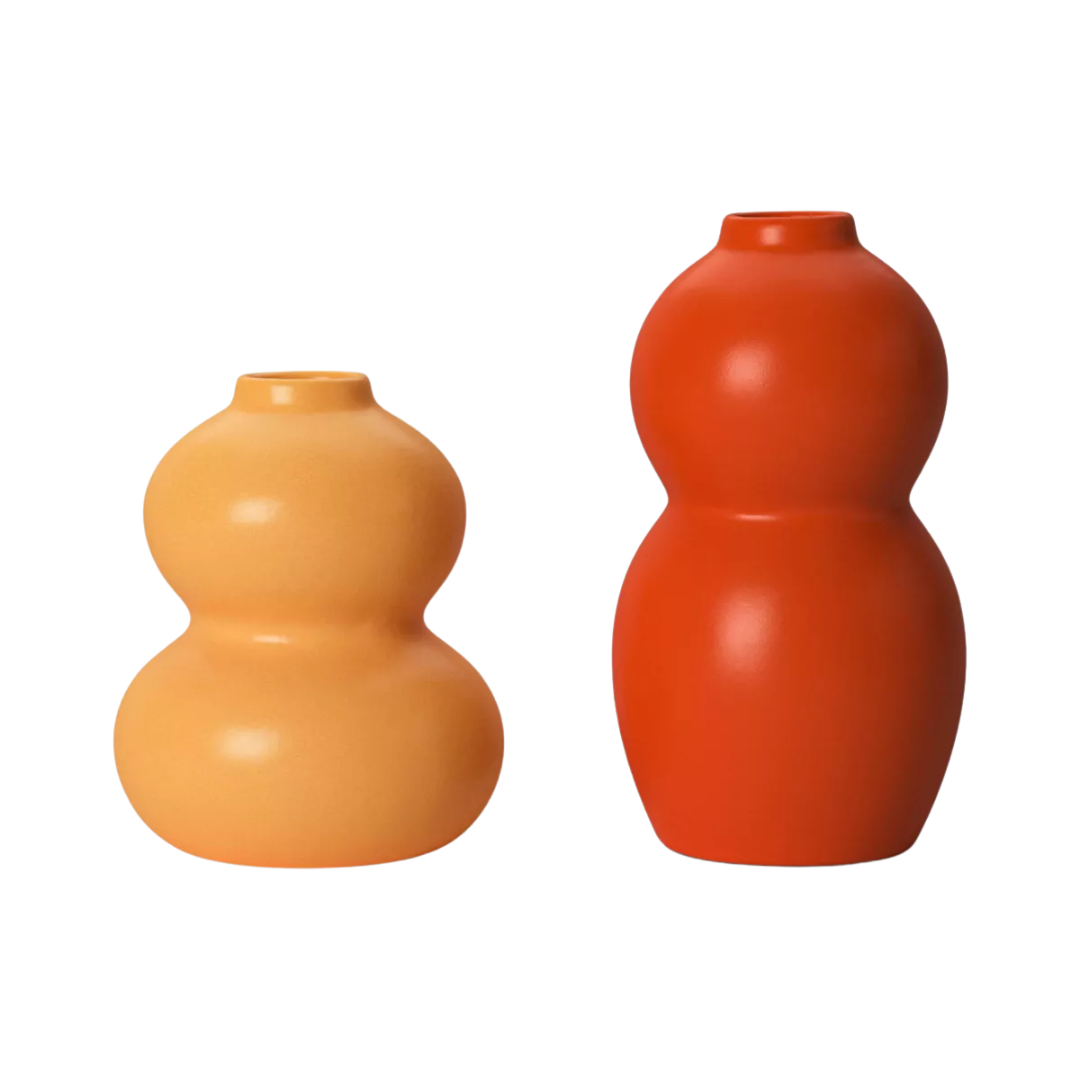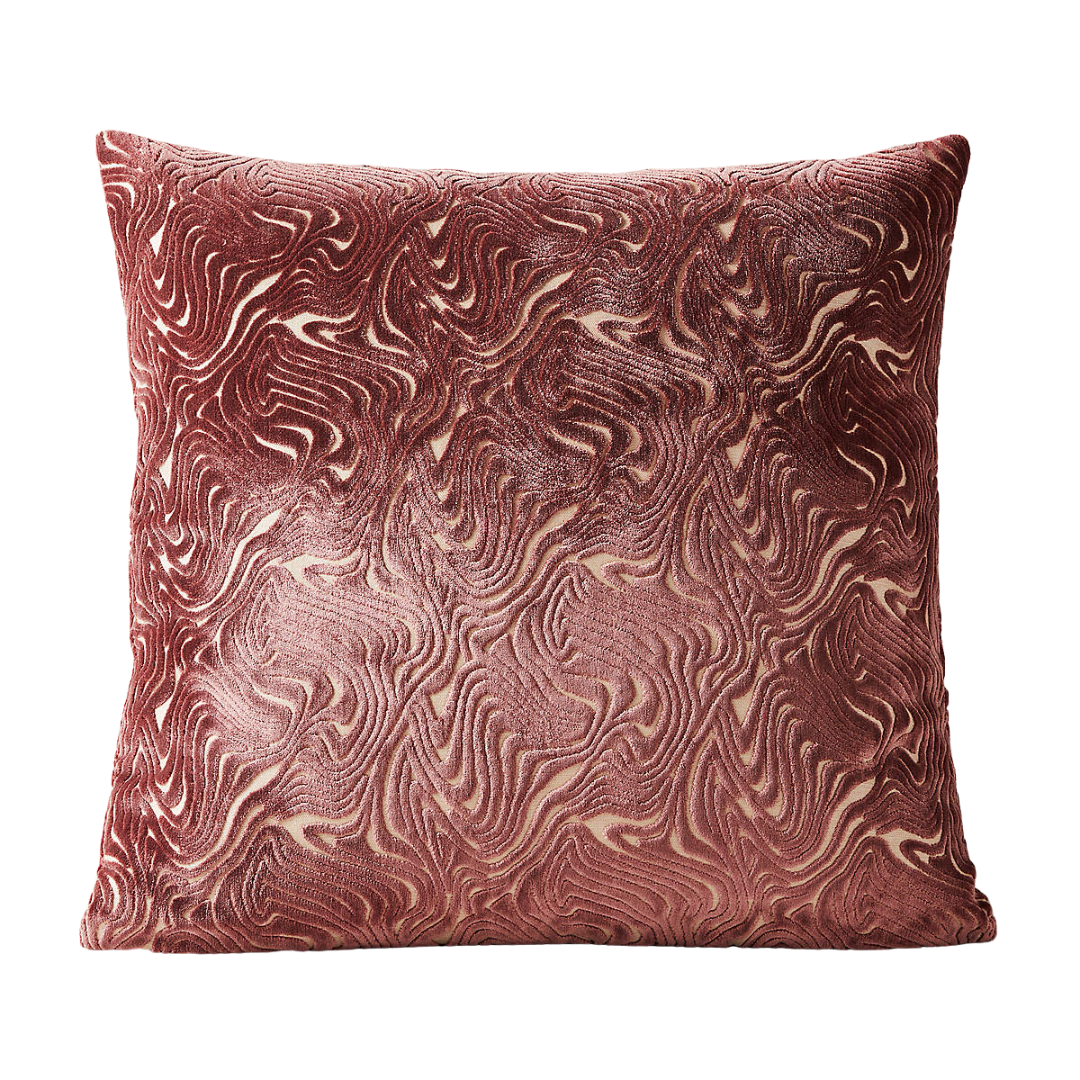What is retro style? Why 2025’s most interesting rooms are looking back and how yours can, too
Designers define what retro style is (and isn’t), plus how to nail the look without looking dated

Camille Dubuis-Welch
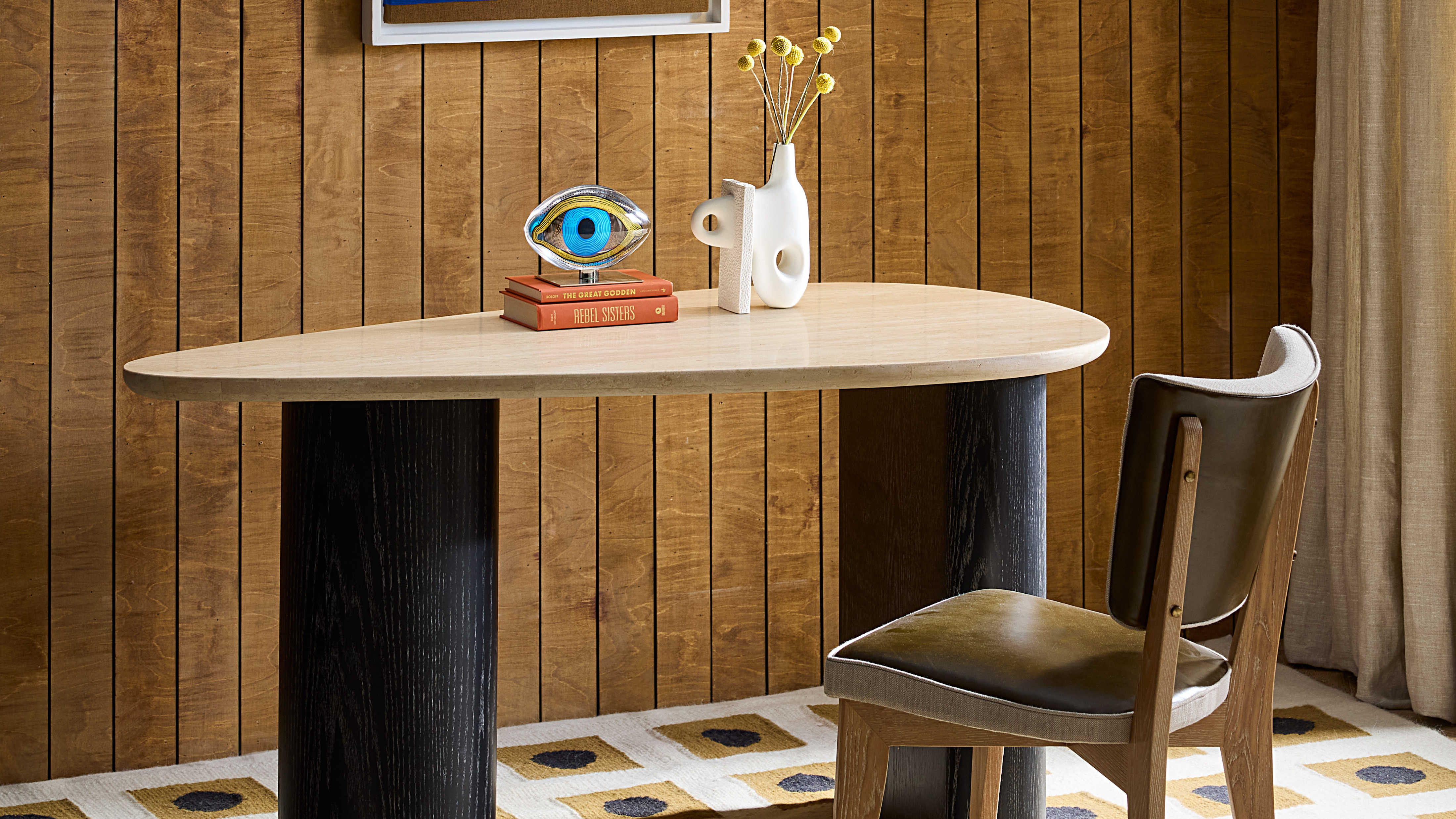
What is retro style, really? At Homes & Gardens, we hear the misconceptions daily – is ‘retro’ just shorthand for dated? A design death sentence of lava-rock fireplaces and curling linoleum? And how does it actually differ from vintage or antique?
As with any interior design style, the line is fine. Done right, it’s good – think a glass-walled 1950s Hollywood Hills home. Done wrong, it’s a dimly lit bathroom with moss-green carpet and an unsettling smell. Take, for instance, glass brick tiles. In the wrong setting, they’re relics best left in the past. In the right hands, they’re the height of now – NYC hotspot Bridges, designed by Billy Cotton, uses them to carve out glowing, chrome-trimmed partitions that read nostalgic, but also manage to mirror the current downtown scene.
This is exactly the nuance: a retro home decor, when approached thoughtfully, is less about recreating a frozen moment in time and more about blending eras – cherry-picking the bold, experimental ethos of decades past and filtering it through our more pared-back, contemporary lens.
We asked designers who live and breathe this style to set the record straight. Ahead: what retro means in 2025 and the smartest ways to make it work at home.
What is retro style?
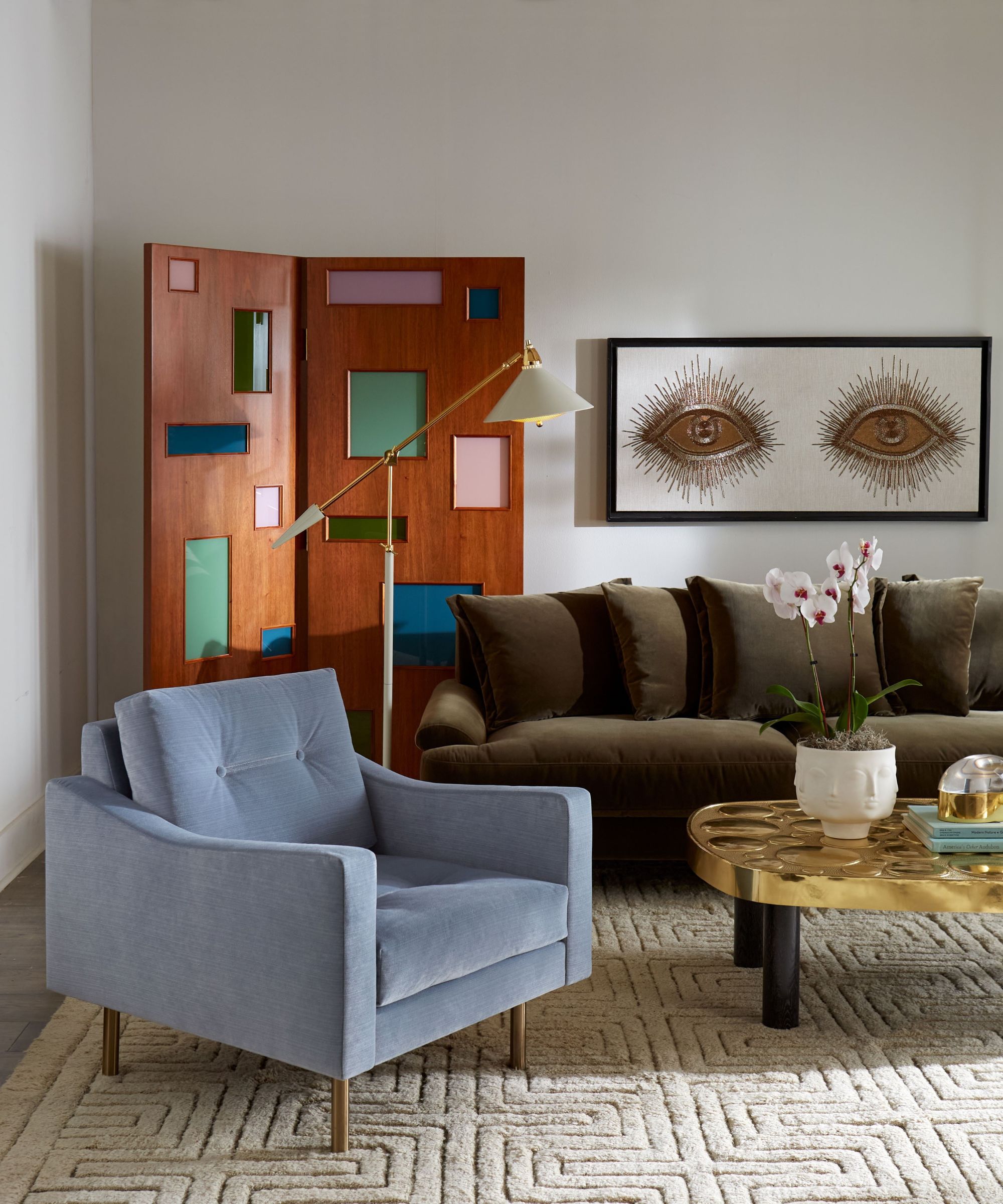
Rather than a standalone interior design trend or style, retro decor reimagines elements from roughly the 1940s through the 1970s.
‘Retro in interior design speaks to a sense of familiarity, nostalgia, and bold character that connects us to the past while living very much in the now,’ explains Annie Harrison, founder of Fare Inc. It’s not a ‘strict replication of mid-century or postmodern eras,’ but rather ‘a reinterpretation that is edited and layered to feel both evocative and current.’
Retro style isn’t about taking your parents’ home as gospel – it’s about taking what you like and leaving the rest, analogous to editorial curation. Annie suggests pairing the glossy warmth of walnut veneer with lively, playful geometry, or echoing that sheen with a lacquered color, then softening it with tactile upholstery like velvet or linen. The key, she says, is balance: ‘It’s about honoring the forms and materials of previous decades while letting them coexist in a modern, refined context.’
Design expertise in your inbox – from inspiring decorating ideas and beautiful celebrity homes to practical gardening advice and shopping round-ups.
And right now, it’s having a moment. ‘The retro look is experiencing a remarkable resurgence,’ Matthew Williamson, the award-winning interior designer, tells H&G.
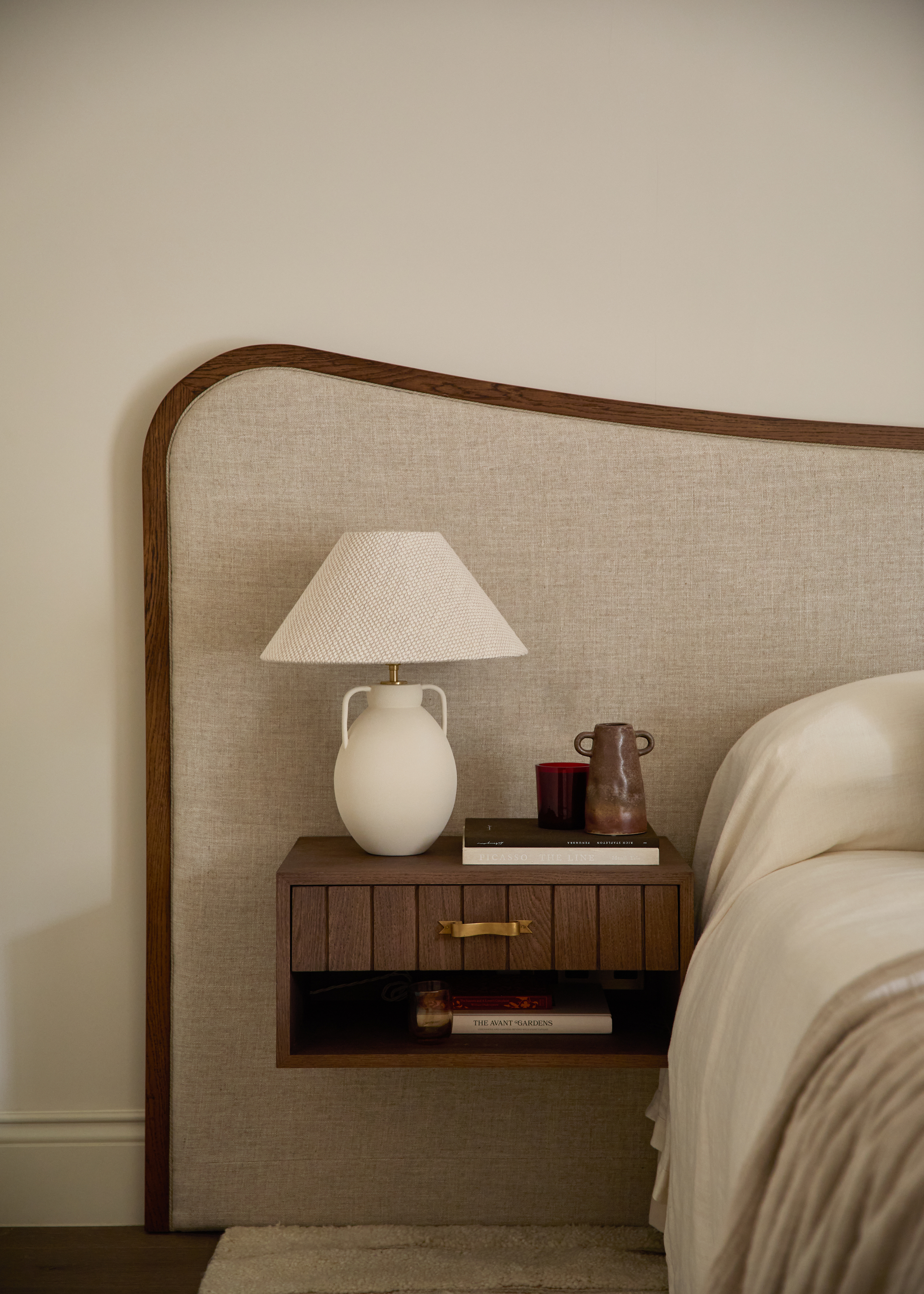
What features characterize retro style?
Below, designers weigh in on how retro can be part of a home that never dates – from the mid-century modern palette rules worth breaking to the statement pieces that instantly give a room that edited, era-blending retro edge.
1. Tone over theme
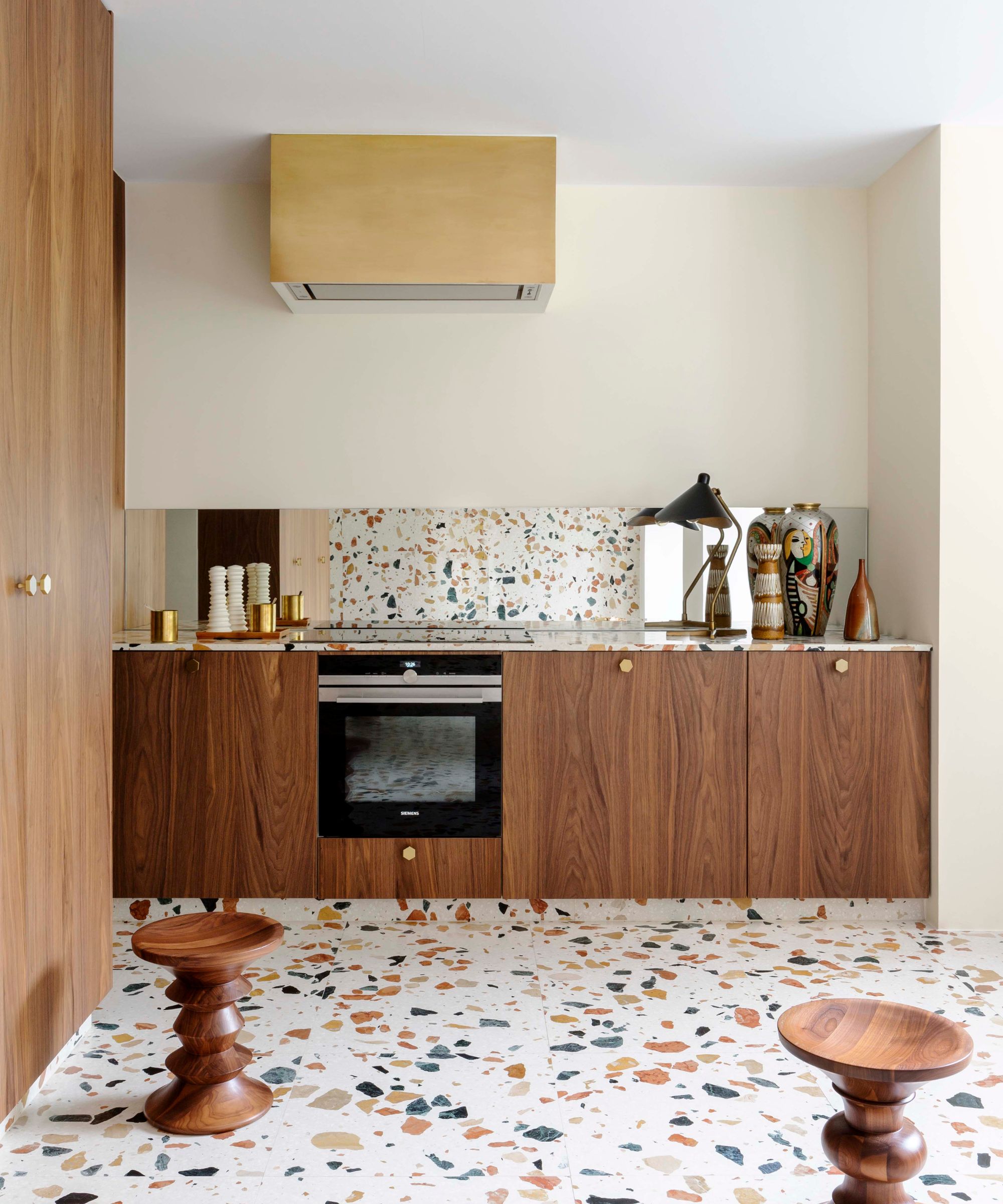
‘Go with tone over theme,’ notes Fare Inc.’s Annie Harrison. Instead of replicating a full retro scheme – think the prototypical glossy red diner with Coca-Cola branding or a caveman-style shower clad entirely in lava rock – ‘use materials and shapes evocatively.’ ‘For example,’ she says, ‘a low-slung modular sofa, a polished burl wood accent, or an unexpected pop of ochre or sage. These gestures suggest retro energy without locking the space into a particular decade.’
It’s a bit like decorating for the holidays. Sure, you could pile a corner with stuffed Santas. Or, you could lay a table in deep burgundy linens, add glints of metallic in the vases, and throw down a shearling rug. Both say Christmas – but only one reads considered. The same logic applies to retro: keep the nostalgia, skip the kitsch.
2. Earthy color palettes
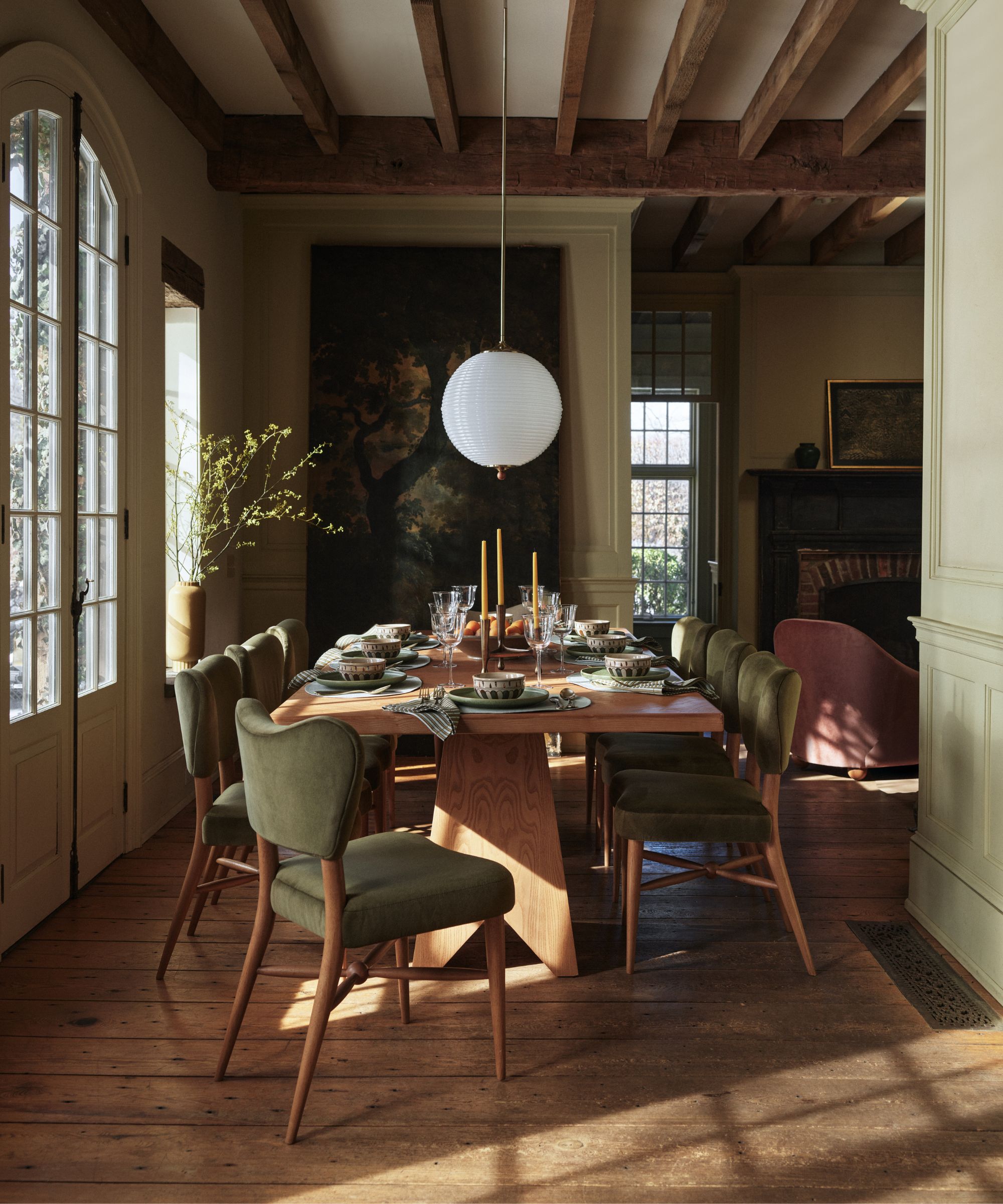
‘Color palette plays a starring role,’ says Collection Seven founder Jessica Hubner of the retro style universe. Stick with mustards, olives, rust, and chocolate browns, updating them where you can with a matte finish to keep them fresh.
‘Decorating with earthy colors and tones bring instant warmth and a nostalgic quality that still feels incredibly current,’ notes Jessica. Let this simple framework guide you, whether it’s a wall color, an upholstered sofa, or a small tabletop object.
3. Tactile textures and materials
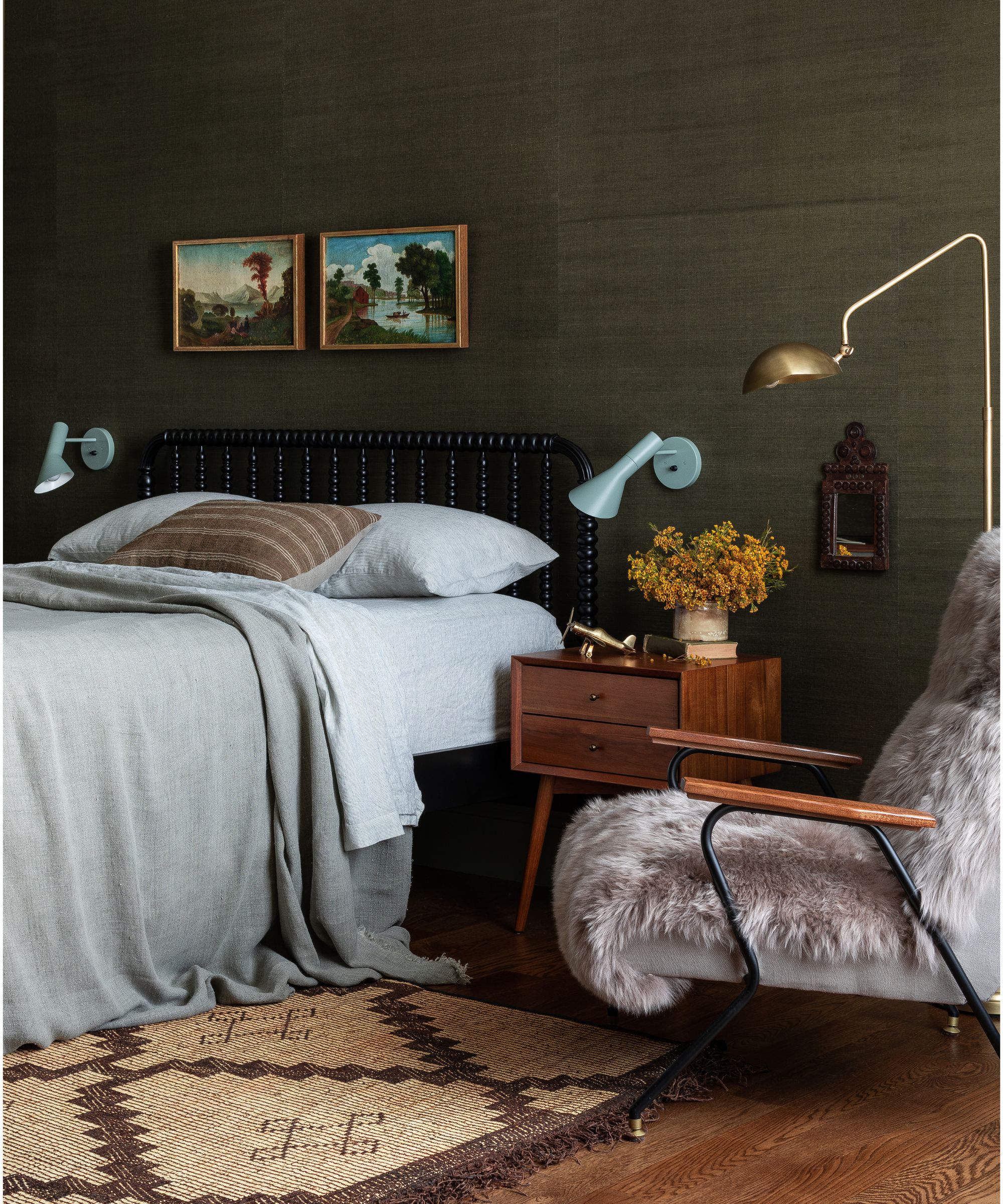
Retro is a style you can feel. The 1940s through to the '70s were an inherently cozy era, and the easiest way to channel it now is through low-lift decor like rugs and upholstery. ‘Textiles with a retro feel are the perfect way to incorporate this look,’ says interior designer Nadia Watts. ‘Nubby tactile fabrics with color and punch are a great place to start. Think bouclé, chenille and velvet.’
Velvet, in particular, is top-tier retro shorthand. ‘It’s the ultimate shortcut to retro luxe,’ explains Jessica Hubner. ‘Velvet has that unmistakable '70s vibe – rich, tactile, and totally glamorous. It plays beautifully with light, giving a space real depth and drama. A velvet accent chair in ochre or burnt orange can transform a room instantly.’
For hard materials, retro often leans into dark, rich woods to ground bolder features. Teak and rosewood are classics in retro kitchen designs, while Nadia champions burlwood: ‘I have always loved burlwood, it reminds me of years past and has beautiful movement. Burlwood is bold, it almost feels alive.'
4. Vibrant prints and patterns

While the overarching color palette may be more restrained, retro style was never austere – it was one of the most experimental, joyfully bold moments in design history.
‘Embrace bold geometric patterns, vibrant hues, and statement furniture pieces such as mid-century modern sofas or tufted armchairs to evoke the essence of past decades,’ says interior designer Matthew Williamson, renowned for his iconic use of pattern and effervescent time-capsule-esque style. Think statement florals, stripes, even animal prints – especially when tempered with softer colors and finishes elsewhere, as Matthew has done in his own projects.
These livelier motifs, he explains, actually play well with the earthier shades we mentioned earlier – terracotta, mustard, emerald – with statement lighting often serving as the bridge between the two. ‘Infuse your personal style into the mix, whether minimalist or maximalist, to create a space that not only honors the past but also reflects your individuality.’
We're envisioning a chocolate-brown living room anchored by a chevron rug and a clean-lined coffee table.
5. Fearlessly rich juxtaposition

Making retro work in 2025 hinges on contrast – shapes, styles, eras, all in dialogue. Geometric forms borrowed from Art Deco design, for example, carry a distinctly retro charge.
Interior designer Henriette Kockum, who recently reimagined the 1960s Life House Hotel in Palm Springs, brought back ‘Old Hollywood’ glamour by layering circular and rectangular forms in earthy, warm tones.
‘Repeated circles or even just random shapes merged together that are geometric,’ she says, are a hallmark of the look. The key is not shying away from drama. ‘They weren’t scared to be bold and do high contrast.’
6. Low slung furniture
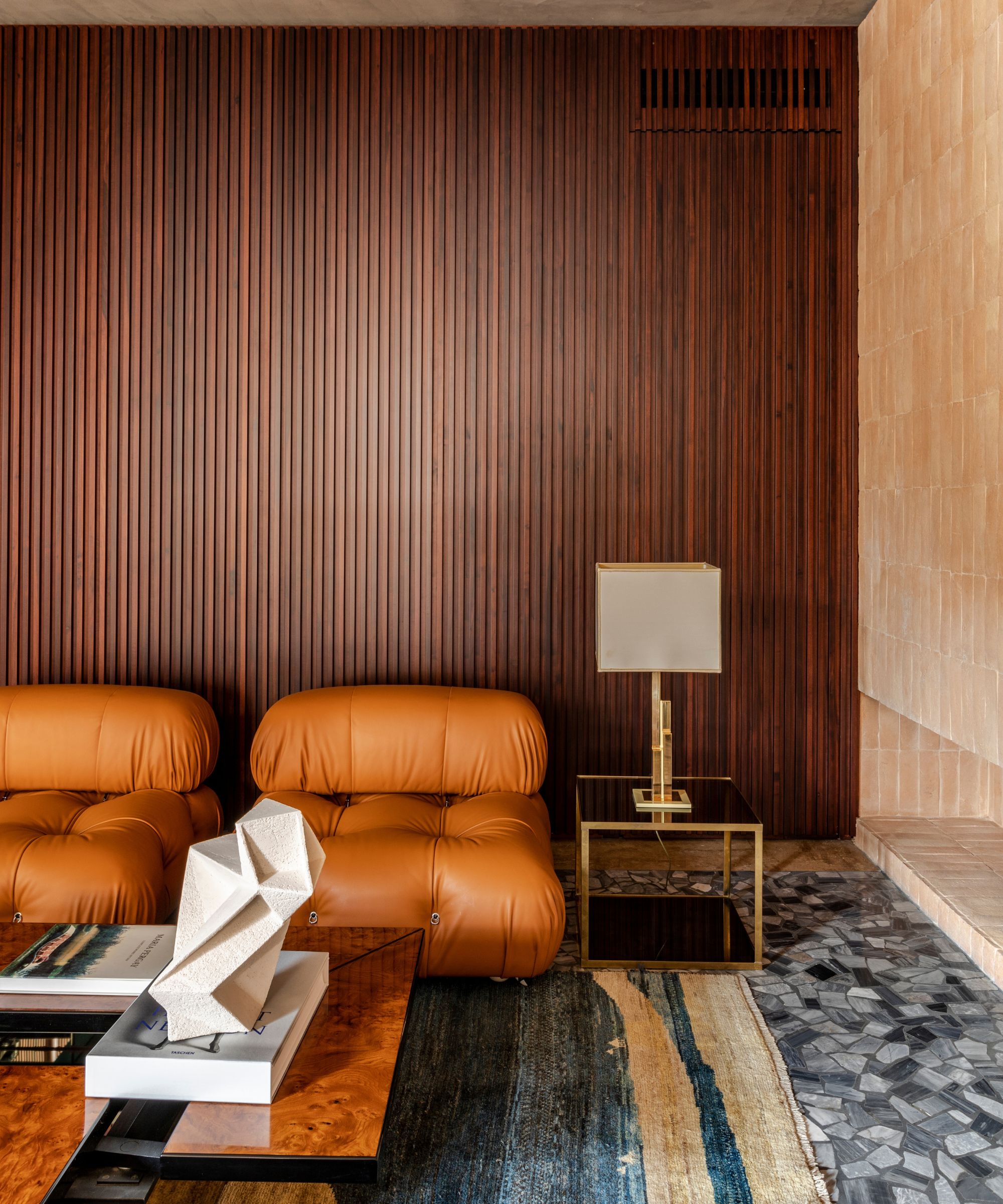
With retro, the goal is to strike a balance – ‘vintage flair’ anchored by modern, grounding elements so the space feels energetic and inviting without spiraling into chaos.
‘Retro decor is timeless and always makes a lasting statement,’ says Amy Youngblood, principal designer of Amy Youngblood Interiors. ‘When mixing these types of pieces into your place I highly recommend selecting other pieces that complement them with simple more clean-lined furniture so as to not take away from nor compete with the retro piece(s).’
‘Think asymmetric sofas, vintage accent chairs, and coffee tables that hug the floor. It’s about curating pieces that feel collected – not coordinated,’ adds Collection Seven’s Jessica Hubner. ‘That mix brings in a sense of ease and personality.’
The same goes for outdoor spaces. Jessica points to Business & Pleasure Co. as nailing the look: ‘Bold stripes and playful frame designs add a real sense of mid-century Hollywood glamour. It captures that breezy, elevated retro vibe without feeling forced.’
7. Sculptural lighting

Lighting ideas follow the same rules as furniture. Juxtapose old with new to keep the look grounded.
‘Statement floor lamps or pendants are the unsung heroes of retro style,’ says Jessica Hubner. ‘They create visual interest and set the mood with that signature golden glow.’
The same applies to smaller fixtures. ‘A bold 1970s pendant or smoked glass lamp feels current when paired with sharp architectural lines or minimalist detailing,’ notes Annie Harrison.
And regardless of what you choose, note that the light itself matters just as much as the form: ‘I always lean toward organic shapes and warm-toned bulbs,’ continues Jessica. ‘They’re flattering and nostalgic.’
8. Bright pops of color for the finishing touch

Just as prints can wake up an earthy retro palette, small injections of color can do the same – much like in Bauhaus design, where decorating with primary colors features highly. The key is to use them sparingly but deliberately, through wall decor, lighting, or accessories with iconic silhouettes.
‘Color is a big part of getting the “retro” look – think pops of mustard yellow, green apple, burnt orange, and pale pink,’ says interior designer Nadia Watts. ‘Art is a great way to bring in retro style without having to swap out furniture. Reproductions of pop art from the 40s and 50s are often bold and colorful, bringing an eye-catching pop of color to your space and creating that perfect retro vibe.’
A curved canary yellow table lamp base, for example, can pick up on tones in a nearby painting without overpowering the room – the hourglass silhouette offering just the right amount of retro weird. Another of Nadia’s go-tos: ‘Kartell lamps and stools are great for bringing a retro vibe, and pair perfectly with items both old and new.’
Why is retro style having a moment in 2025?

The look has never really disappeared, but its latest resurgence echoes a broader shift in how we want our homes to feel.
‘People want their homes to feel like a true extension of who they are – and that means mixing materials, prints, furniture styles, and color, which speaks to their personal style,’ says Collection Seven’s Jess Hubner.
‘We’re moving away from cookie-cutter interiors toward something more expressive and characterful,’ she continues. ‘Retro style gives people permission to experiment, to layer, to have fun. We’re also seeing a lot of influence coming from the hospitality world – members' clubs and boutique hotels are embracing retro elements for their warmth and escapist charm.’
NYC mainstays like the airport-themed, red-carpeted TWA Hotel and The Roxy – which blends mid-century shapes with Art Deco and Regency glamour – are fantastic examples, as are the mirror-walled, warm-wooded interiors of Hotel Ulysses in Baltimore, Maryland.
How can I add a retro design element into my home?
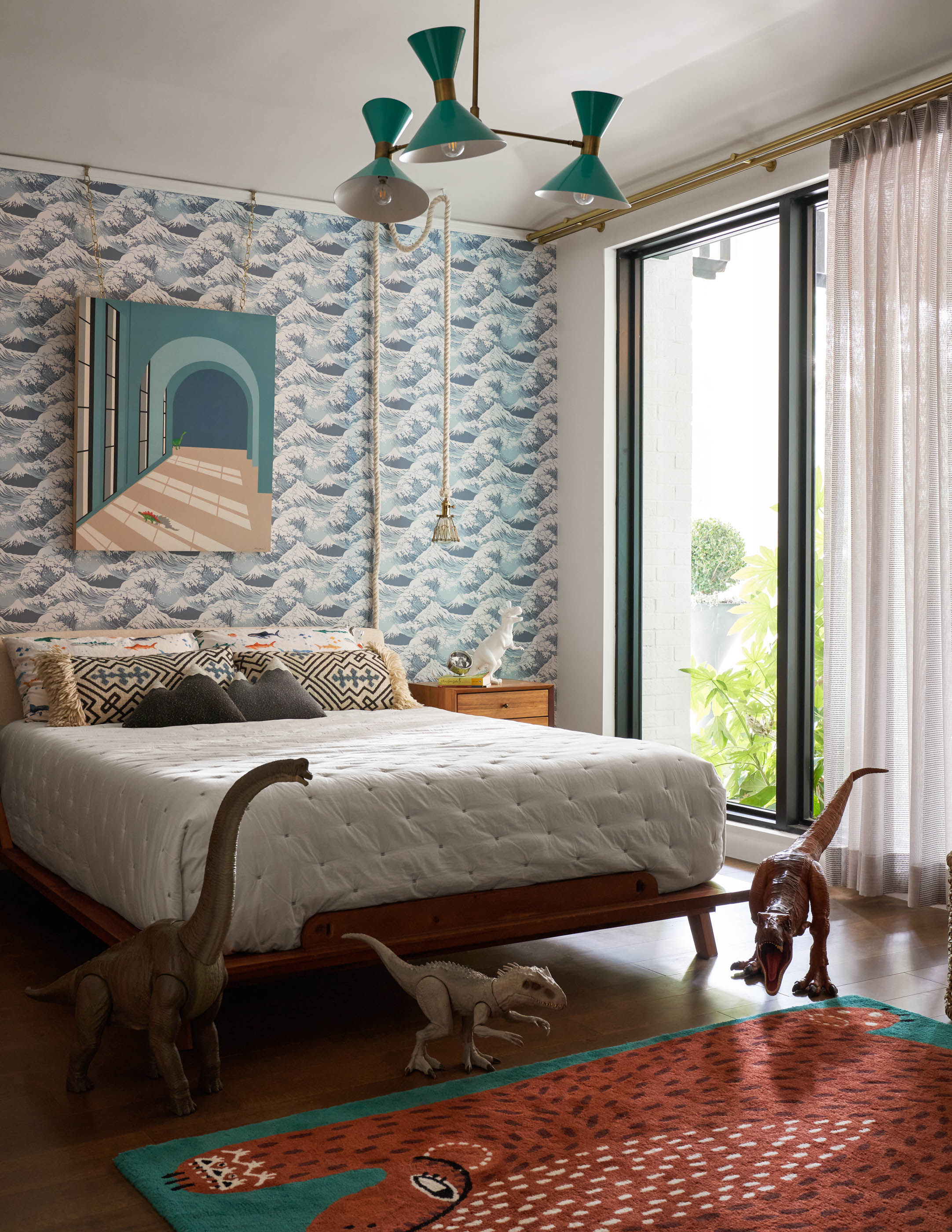
With retro, a little goes a long way. This is the fun of it, and it makes shopping for retro pieces easier if anything. Instead of a full house, should you stumble upon something that speaks to you, and of the past, it will work.
'You don’t have to completely saturate your space in all things retro, a few perfectly placed items give you that retro feel without overwhelming your space and making you feel like you are living in the '50s,' says Nadia Watts. Smaller but impactful accessories, including rugs, and other soft furnishings are a good way to lean into this style. 'Bold patterns like a checkerboard, decorating with stripes and fish scales bring a retro look no matter the color. If you lean more towards solids, try a shag rug for the retro look.'
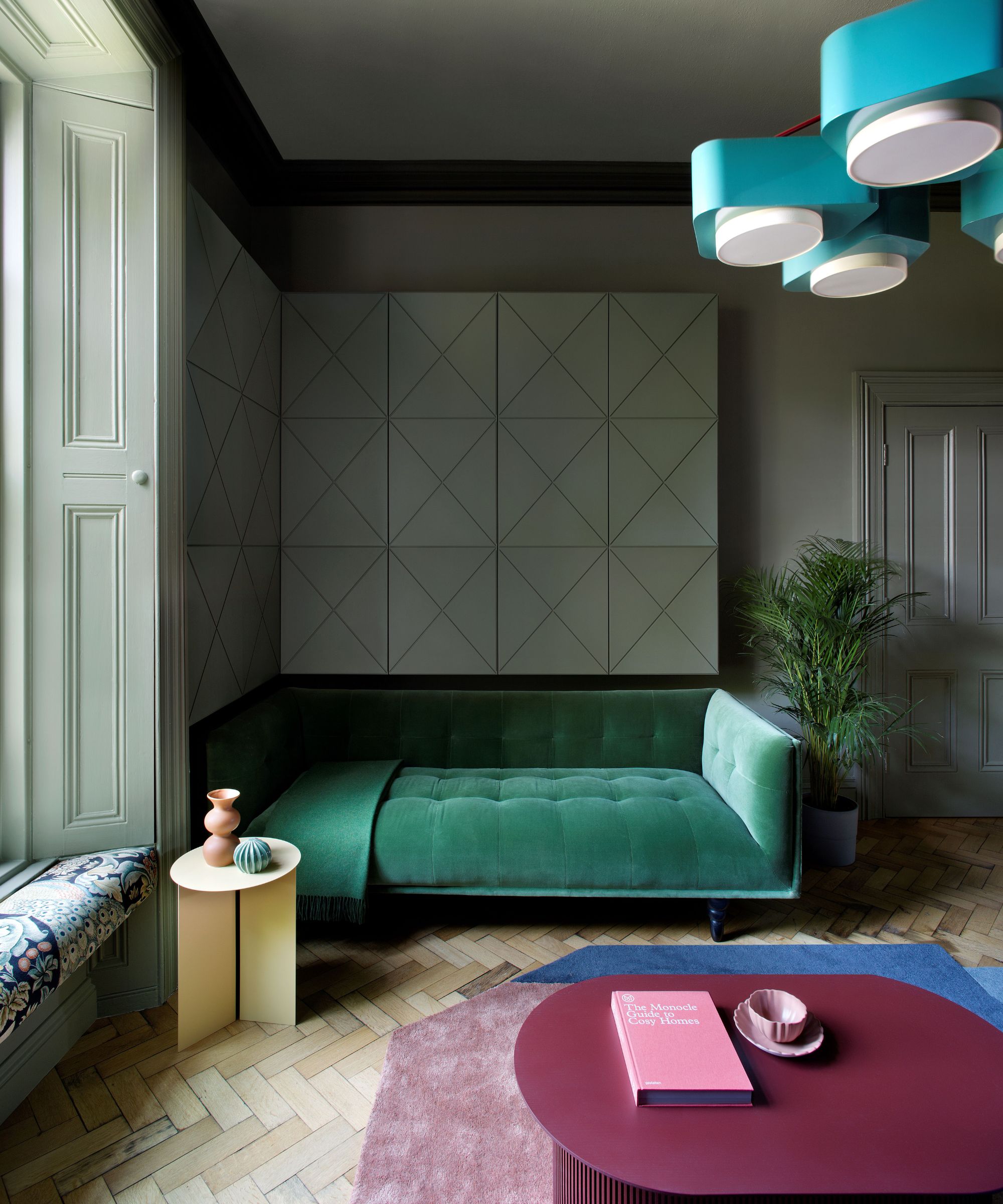
Look for colors, textures, and tones, that can be combined in different areas of your home if you want an air of continuity. Jewel-colored throw pillows in the lounge, or a chevron-printed throw in the bedroom. It is all about balance.
'If you really want to go with a more colorful, trendy look, it is okay to mix the retro items up a bit as long as they aren’t competing or are too similar in style. Also, if these pieces are colorful, try to balance them out with the same color in other areas of the space without overloading the entire space,' says Amy Youngblood. 'When in doubt, less is more!'
Are there any elements of retro style to avoid?
In theory, nothing’s untouchable – even the most ‘dated’ of the ‘dated’ can look fresh if styled with intent. That said, Jessica Hubner admits there’s one retro trope she’s happy to leave in the archives.
‘For me, bold retro florals haven’t aged quite as well – especially when overused. There’s a fine line between statement and sensory overload. I’d rather commit to one strong focal piece, then build around it with tone and texture to keep the room cohesive.’
Noted – we’ll stick with chevron.
Shop retro-style decor
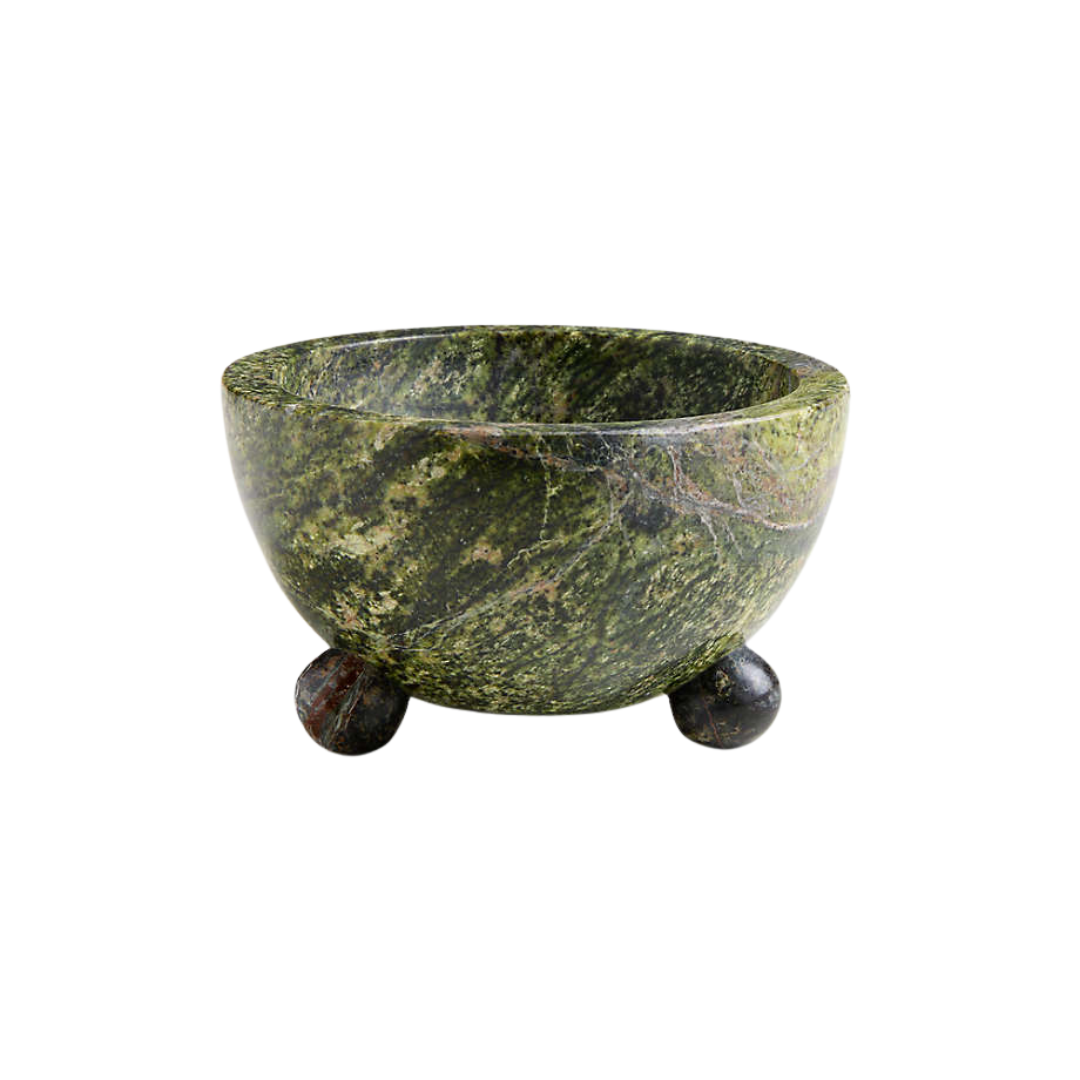
Retro done right means leaning into contrast. This green marble pom pom is destined for a color-wheel clash – go bold with red, or keep it sultry with the smoked mauve to the left. Use it for salt, sugar, or absolutely nothing at all.
If retro speaks to you, you’ll probably fall hard for Nostalgia-core too – the interior design trend spinning sentimentality into style, conjuring happy memories, and harkening back to a slower, softer past.

Julia Demer is a New York–based Style Editor at Homes & Gardens with a sharp eye for where fashion meets interiors. Having cut her teeth at L’Officiel USA and The Row before pivoting into homes, she believes great style is universal – whether it’s a perfect outfit, a stunning room, or the ultimate set of sheets. Passionate about art, travel, and pop culture, Julia brings a global, insider perspective to every story.
- Camille Dubuis-WelchContributing Editor

